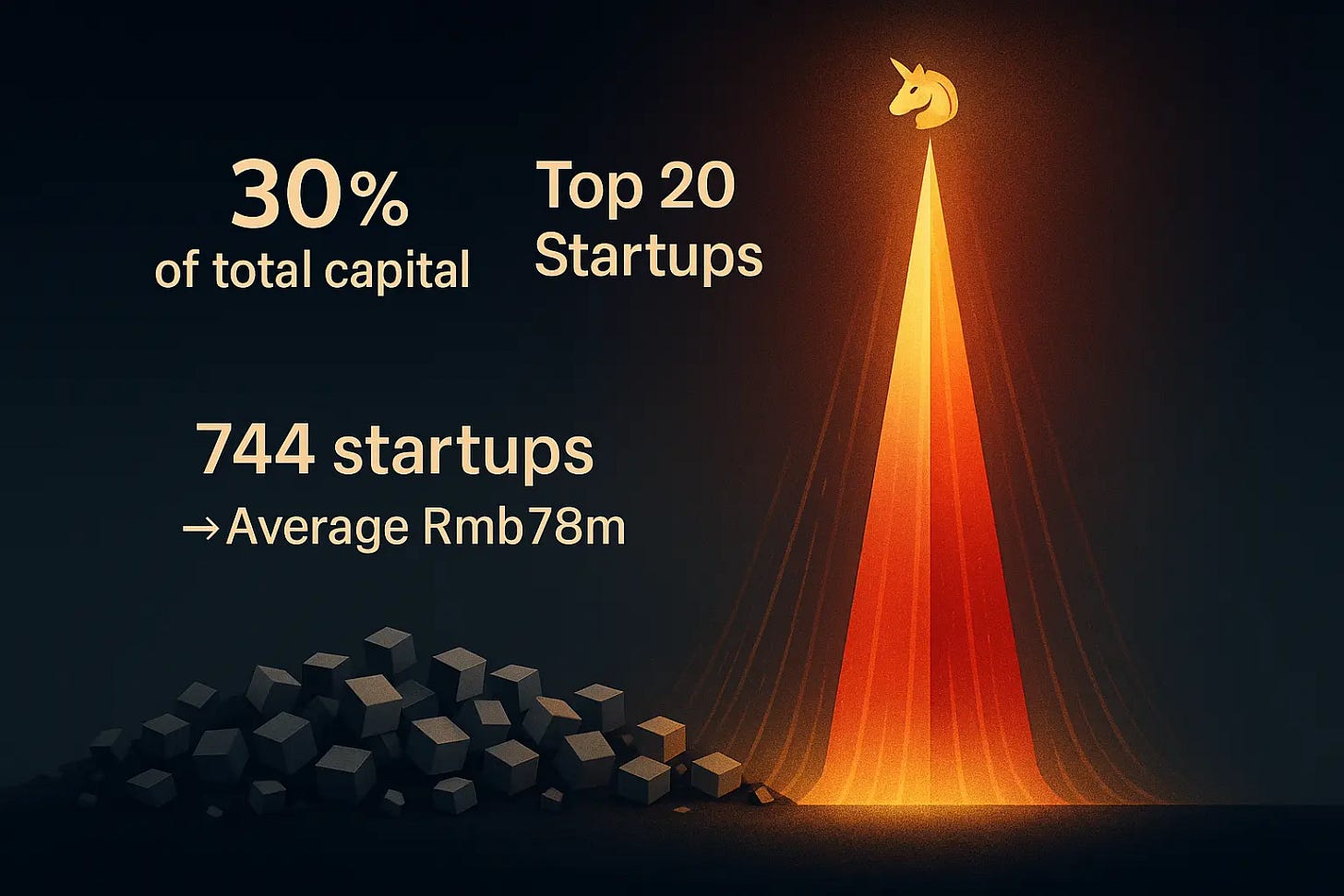A Spike, Not a Pyramid: China’s State-Engineered AI Boom
China’s AI boom is now driven by state capital, not venture markets.
This is Flashpoint, Hello China Tech’s premium quick-strike column. In under 600 words, we cut through the noise to unpack one market-moving China tech event and why it matters. Flashpoint drops whenever the story demands it–weekdays or weekends.
Today’s column examines the illusion of China’s AI venture boom. Behind the headlines of billions raised, the top 20 start-ups have captured 30 per cent of all capital, leaving 744 peers to fight for scraps. What looks like a pyramid is in fact a spike–an unnatural shape engineered by state capital. RMB-denominated funds now dominate, reshaping incentives and recasting the very relationship between founders and investors. For the Flashpoint overview, see our introduction here.
China’s AI venture scene appears flush. As of September 22, 2025 (IT Juzi data), 764 AI companies had raised a combined Rmb83bn. Look closer, however, and the boom is a mirage. This is a feast for the few, marked by a brutal concentration of capital that reveals a market increasingly shaped not by venture capitalists, but by the state.
The core of the problem is distribution. The top 20 AI start-ups alone have vacuumed up 30 per cent of all capital deployed. These chosen few, 11 of which are already unicorns, raised a median of Rmb1bn each. The other 744 aspirants were left to fight over scraps, averaging a paltry Rmb78m. This is not a healthy pyramid; it is a spike. The chasm between the anointed and the anonymous is widening into an abyss.
What looks like a spike on the surface hides a deeper shift: money, power, and risk are being redistributed. The full story continues below.


